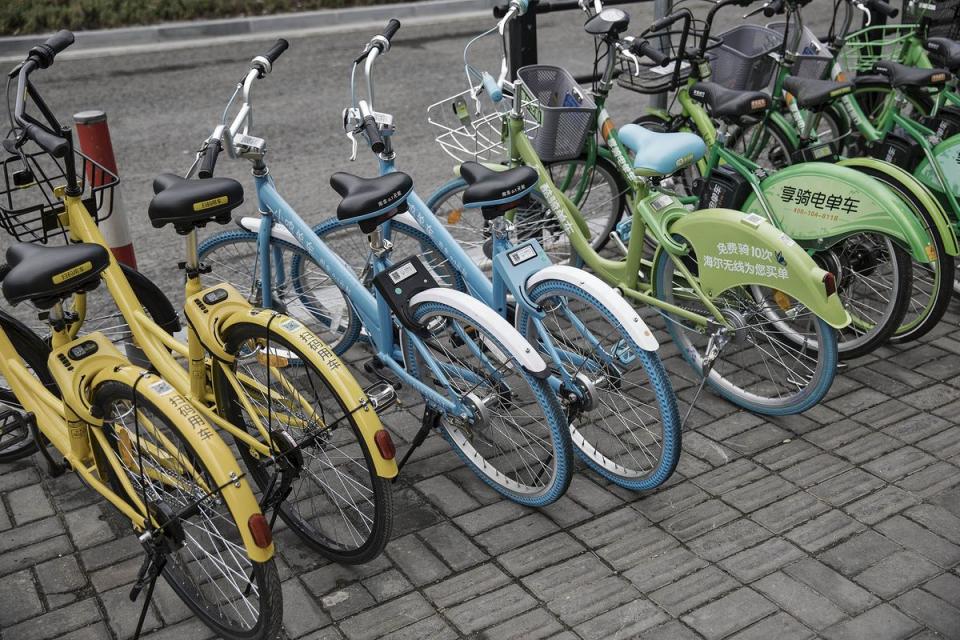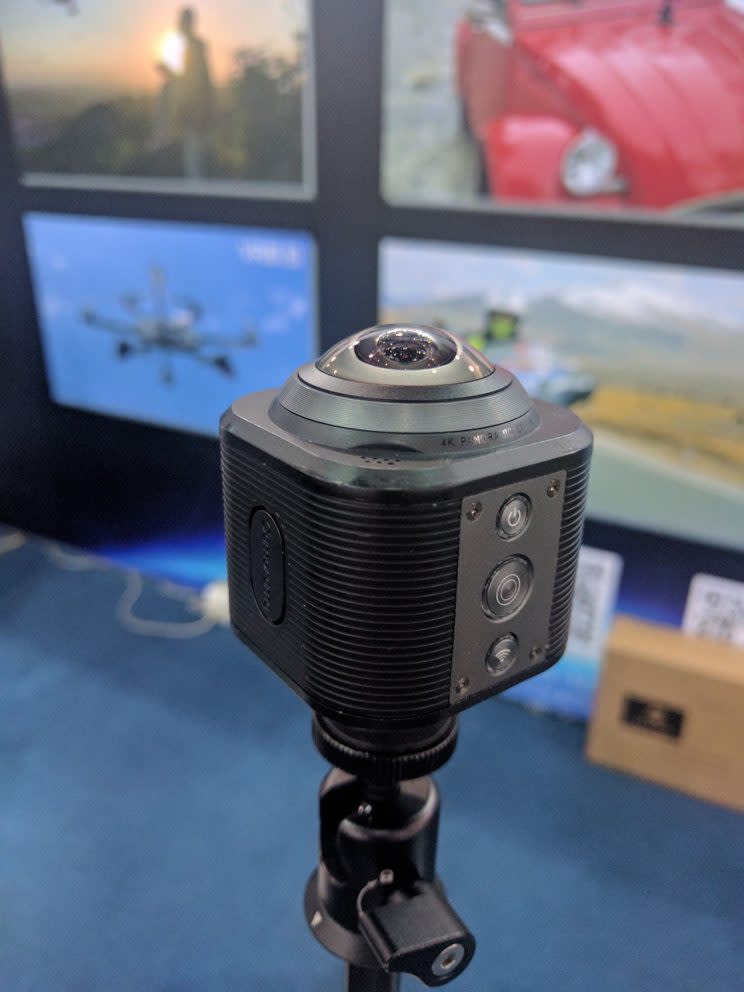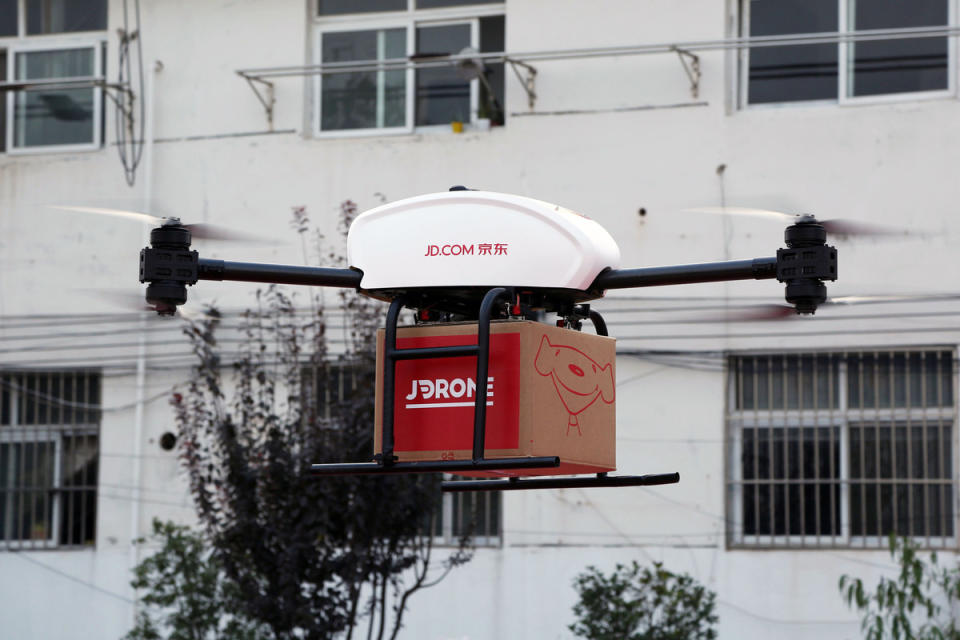CES Asia shows where consumer tech is heading in one of its dominant markets

SHANGHAI—CES Asia is not CES. It’s smaller and younger than the sprawling, 50-year-old tech show that takes place every January in Las Vegas. And it’s far closer to the factories making many of the gadgets you use—and the increasingly prosperous customers buying them alongside you.
The Consumer Technology Association’s show in China’s financial capital, only in its third year, gathered an expected 35,000-plus attendees for three days of exhibits, panels and conferences. Some 66% of exhibitors here didn’t make it to January’s gathering. For a first-time CES Asia attendee but 21-time CES victim like me, it offered a glimpse at where consumer technology is heading in one of its dominant markets.
The lesson: China wants its gadgets, and it’s not going to wait for American firms to sell them here. Some of the resulting hardware may not go far in the U.S.—I have to hope there isn’t much of an American market for robots that can perform an interpretive dance to “Let It Go”—and others will lead the People’s Republic to some of the same tech-induced anxiety we face in the States.
Mobile first
We all stare at our phones, but customers in China are more likely to fix their gaze on the same app—the near-ubiquitous WeChat app that serves as a messaging system, social network, payment mechanism, newsfeed and more. You could call WeChat developer Tencent Holdings, Ltd. the Apple (AAPL) of CES Asia—the company that made no huge announcements because it didn’t need to—except that its software was far more ubiquitous on people’s phones than Apple’s is at the January gadget show.
As tech analyst Ben Thompson observed in April: “For all intents and purposes WeChat is your phone, and to a far greater extent in China than anywhere else, your phone is everything.” If you want to know why Facebook (FB) and Apple keep cramming new functions into Messenger and iMessage, there’s your answer.
CTA senior economist Steve Koenig, citing a recent survey conducted for the Arlington, Va., trade group, said at the conference that 86% of Chinese tech buyers check WeChat multiple times a day.
My humbling reminder of that came every time a Chinese executive apologized for not having a business card, then asked “are you on WeChat?” Sorry, no.

Other evidence of China’s mobile mentality waited on the streets outside, where shared bikes from services like Ofo waited for the next passerby to unlock one with a phone app and then leave it locked anywhere on a sidewalk with the same app. Alfred Zhou, an economist with the market-research firm GfK, noted that users of those bike-share services had grown from zero to 18.8 million in the 11 months before April 2018.
Smart homes in their own orbit
The CES Asia exhibits abounded with the customary demonstrations of how technology will relieve us from having to shut off light switches by hand or leave everyday tasks un-quantified. For example, Oomi’s smart-home hub aims to offer easy setup with other Oomi modules: just tap the two orange NFC dots on each device to pair them together.
Not far away, xSleep’s SmartBed used sensors to gauge the dent you left in the mattress and, therefore, your sleep quality. The obvious question after seeing a readout from it: Does this smart bed make my butt look big?
But these displays did not revolve around the usual (AMZN), Apple, or Google (GOOG, GOOGL) software.
“Alexa is not prominent, Google Home is not prominent,” said Oomi CEO Winston Cheng. That firm does plan on bringing its system to the States (its hardware made its way into this year’s Oscars gift basket) and so is adding support Google’s Nest and Amazon’s Echo, but it’s an exception.
Instead, Chinese firms are developing their own standalone systems. The wireless carrier China Mobile and the retailer Suning each showed off their own smart-home platforms that could link connected cameras, thermostats, and smart appliances.
Google probably won’t be in this market anytime soon until Beijing ends its censorship of Google’s search and news sites. Apple’s HomeKit trails behind Amazon’s Alexa worldwide, while WeChat’s role as the everyday phone interface here holds it back further.
AR and VR ambitions
Augmented-reality and virtual-reality developers filled much of the show-floor space. That’s also the case at tech gatherings like the U.S. CES, but the contenders here are likely to enter the market with lower prices aimed at a growing domestic market.
GfK’s Zhou said during this talk that VR-hardware sales in China would more than double from 750 million RMB last year to 1.6 billion RMB—$110 million to $235 million.
The Android-based Pico Neo standalone VR headset, for example, weighed much less than headsets that required inserting a phone and didn’t demand a cable tethered to a PC. And the 360-degree, Ultra High Definition Camorama camera—and its $400 price—help explain why GoPro (GPRO) has been hurting so much lately.

In augmented reality—in which a display projects information in front of your view of the real world—the Futurus Horizon HUD drew attendees for its ability to project Yelp-style data about nearby attractions on a car’s windshield. I have to write “Yelp-style” because that San Francisco firm (YELP) doesn’t operate in China.
And Shadow Creator’s Halomini AR visor won a gadget contest for its lightweight implementation of augmented-reality overlays in scenarios like displays of manuals to maintenance workers.
(Disclosures: I helped emcee that contest, and CTA covered my travel costs.)
Drones are coming for their jobs too
No tech show is complete without an extensive array of drone exhibits. The attractions here included an exhibit from UPS (UPS) that invited attendees to experience its drone delivery by getting suspended from a harness while wearing a VR headset showing the drone’s view of a dropoff.

Verdict: I don’t want to be delivered by drone, and I don’t endorse checking out exhibits like this before lunch.
But the most eye-catching drone display came at the exhibit of the Chinese retailer JD.com (JD). The online store that beat back Walmart (WMT) in China demonstrated a lineup of drones to inspect its warehouses, move items around them, and deliver purchases to customers—not just in the air, but on streets and sidewalks traversed by its six-wheeled delivery robot.
The People’s Republic may benefit from low labor costs, but even it isn’t immune from still-cheaper automated labor.
Should U.S. tech companies console themselves with the thought that their rivals across the Pacific face the same problems? No. CTA president Gary Shapiro offered a history lesson in a Q&A with journalists Thursday: “Some of the—I don’t want to call it arrogance—the confidence that the U.S. has had, is like the confidence Japan had 25 years ago.”
More from Rob:
The big issues we want Apple to address in macOS High Sierra
How Washington is throwing away its shot at protecting your privacy
YouTube thought a giant American flag wasn’t ‘advertiser friendly’
Email Rob at rob@robpegoraro.com; follow him on Twitter at @robpegoraro.

